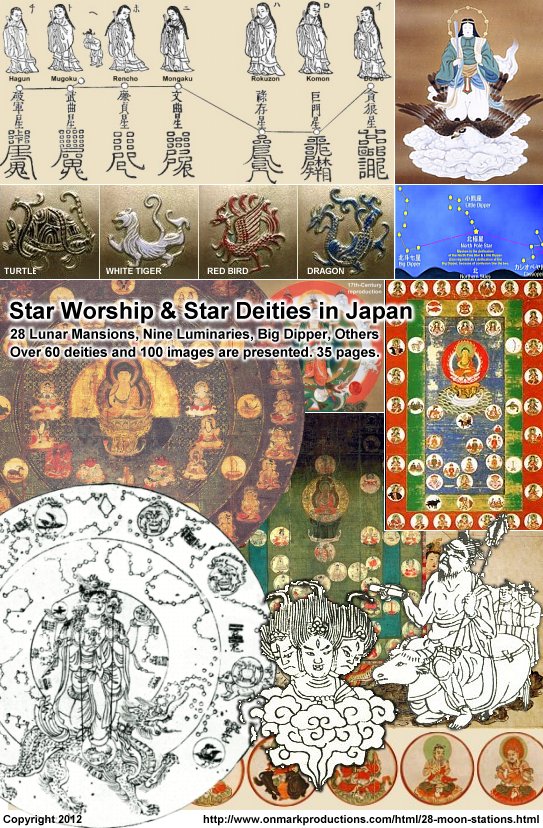Star Worship in Japan – A Special Report
Monday, December 3rd, 2012Japanese Buddhism & the Deification of the Stars
Japan imported China’s Yin-Yang divination and Feng Shui practices in the mid-6th century CE, including astrological lore surrounding star groupings such as the Seven Big Dipper Stars, the Nine Luminaries, the 12 Zodiac Signs, the 28 moon lodges, and the 36 animals. The most receptive camps were Japan’s esoteric Shingon and Tendai schools, which took the lead in introducing star worship to Japan. The integration of celestial bodies into Japanese Buddhism peaked during the mid-and-late Heian period, but star faith never developed into a major branch of Japanese esoteric art — indeed, the number of extant star mandala and star-related masterpieces in Japan is very limited. Star worship is still alive today in Japan, but it is not a major force in modern religious practice. This 35-page report presents a brief history of the 28 moon lodges in China and the group’s later usage in Japanese star worship. This is followed by a lengthy review of the 28, plus a guide to the deification of other important stars and planets, including the Seven Big Dipper Stars, the Nine Luminaries, and the Pole Star (aka Myōken Bosatsu). All together, some 60 deities and over 100 images are presented. Click the image below to get started. Enjoy the tour. Popcorn not included.






